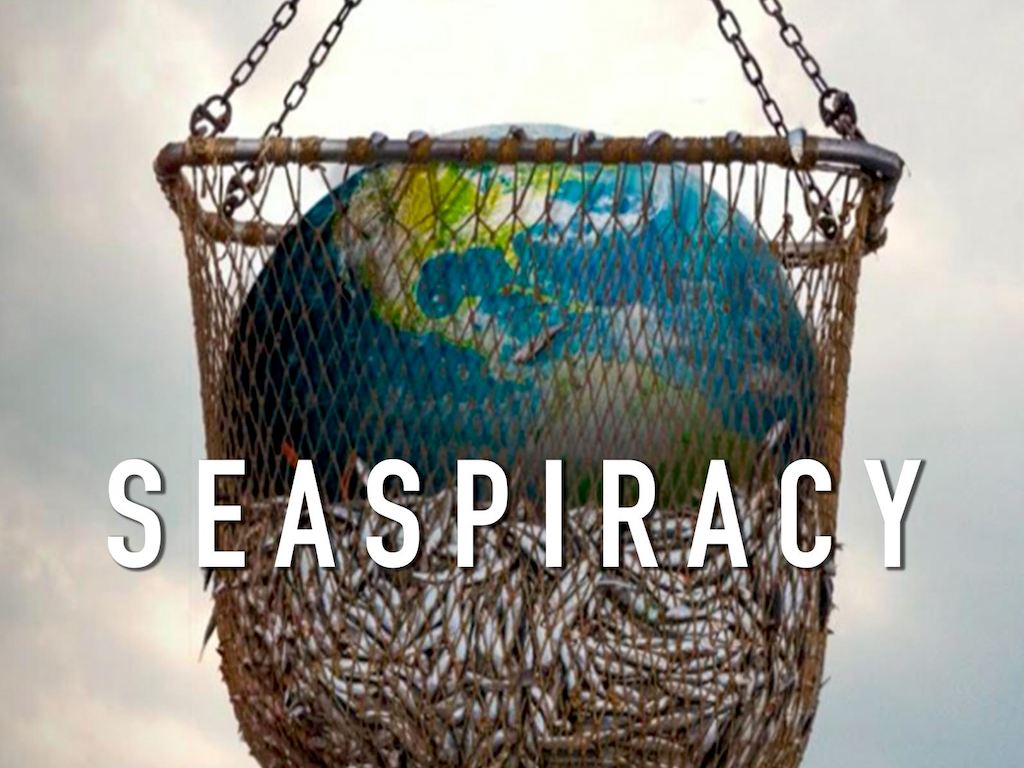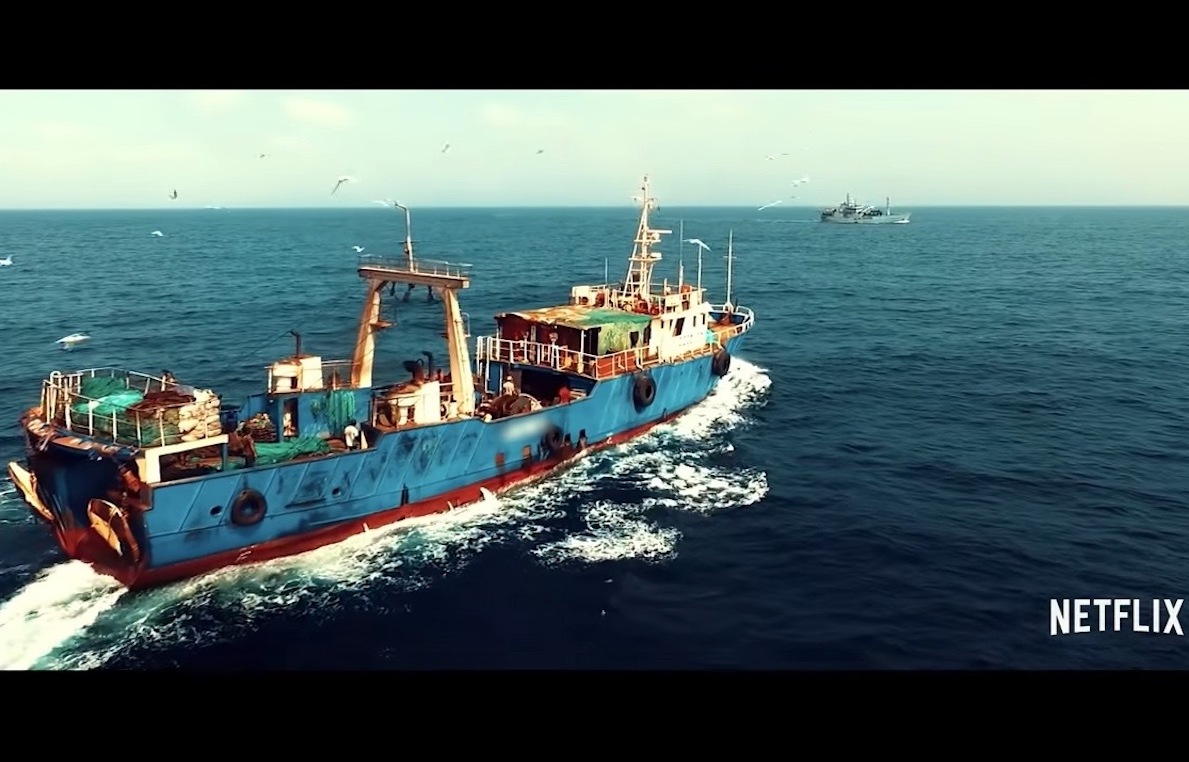Netflix Seaspiracy Review: If You Can Still Eat Fish After Watching This Film, We’re Not Made The Same
8 Mins Read
Director Ali Tabrizi’s documentary film, backed by Cowspiracy’s executive producer Kip Anderson, is shocking, terrifying and an unsparing indictment of the commercial fishing industry. Let’s hope everyone on the planet watches it so our oceans have a chance at survival.
Green Queen has covered every single fact and issue that Seaspiracy brings to life on screen and yet, watching the documentary by director Ali Tabrizi and his partner Lucy Tabrizi, is a reckoning of humanity and our cruel ways that is hard to swallow. But swallow we must.
It’s hard to overstate what an important piece of filmmaking this is. Video is powerful. In many ways and for most people, far more powerful than the written word, and I say this as a lifelong reader who prefers reading to YouTube scrolling. You will have heard of many of the topics that Seaspiracy depicts. But what Tabrizi has done is create a story that weaves together every single issue around the destruction of our oceans, one that is impossible to unsee. It’s a story he did not plan on.
He starts with plastic. A lifelong lover of the oceans, with a particular affinity for whales and dolphins, he begins his filming journey sharing his personal war on plastic: he avoids straws, utensils, plastic bottles. Single-use plastic is killing whales and he is committed to do what he can, or so he thinks. Until he discovers that people still kill whales, which leads him and his partner, who accompanies him throughout the film, to Taiji, the infamous Japanese ‘cove’ where dolphins are massacred and captured without mercy (it’s a literal bloodbath). There he highlights the dolphinarium industry: live dolphins sell for USD 100,000 at least and in one particularly salient moment, Tabrizi shares footage of himself as a young boy watching a killer whale show at what looks suspiciously like Hong Kong’s Ocean Park. But in Taiji he learns that dolphin slaughter is merely a reaction to overfishing. Tuna is a US$42 billion industry, and Taiji fishermen kill dolphins and whales so they won’t complete with them on fish catch.The real prize is the blue fin tuna, aka the most expensive fish in the world, whose population decimation has left barely 3% of the species alive.
And while many of us single out the Japanese as the perpetrators of this dolphin murder borne out of their attachment to whaling (despite an international ban that has been in place since 1986), Seaspiracy shows us the shocking and sad reality. Far more dolphins are killed every year due to bycatch, what the commercial fishing industry terms “accidental take”, which describes all the fish and sealife that end up caught in fishing nets and trawlers. One of the many highlights of the film is an interview with Mark J. Palmer, Associate Director of the International Marine Mammal Project of Earth Island Institute and a spokesperson for Dolphin Safe, an organization meant to certify tuna and other canned goods as free from dolphin catch, revealed on screen to be a sham of corruption and ineptitude. The man actually says on camera that Dolphin Safe cannot guarantee that any seafood is dolphin safe. In order to guarantee this, they would need to have ‘observers’ on every fishing boat (they don’t). I was incredulous. How could the man possibly have agreed to be filmed?
We’re less than 30 minutes into the movie and I wonder where Tabrizi is going to go with more than an hour left on screen. Turns out his next stop is my hometown of Hong Kong, aka ‘Shark Fin City’ so-named because 50% of the world’s shark fins are exported through our ports. In the ‘fragrant harbour’, Tabrizi resorts to spy cameras to document the rows and rows of dried shark fin shops that populate neighbourhoods like Sheung Wan and Sai Ying Pun after being repeatedly asked to stop filming. He speaks to OceansAsia founder and the city’s leading marine life activist Gary Stokes, who explains just how vital sharks are to our global ecosystems. He interviews an ex military who was attacked by a shark during a mission, resulting in the loss of his leg and part of his arm. Today, he campaigns and advocates against shark fin consumption. His message? Without sharks in the oceans, humanity is doomed. They are vital for our survival, despite our insistence on them being an enemy we must tame.
Read: It’s time to reconsider seafood – here’s what you need to know about the global fishing industry
More interviews with activists reveal a litany of depressing and horrifying facts; by 2048, the oceans may be empty of fish. We are killing 50 million sharks every year just in bycatch, i.e. not even on purpose. No other industry kills as many animals or species, not GMO farming, not the livestock industry, not the oil sector. Let that sink in.

The next part of the film is a favorite of mine because it’s one of the most original parts in terms of content. Many of the other messages in the film have been extensively reported on and backed by hundreds of investigations. This is not a criticism. These messages deserve repeating and Tabrizi does his job well. But what does not get near enough coverage is the missing link between anti-plastic activism and seafood consumption. In my gung-ho activists circles, we talk about this regularly. How can anyone who campaigns against plastic eat fish, when fishing nets make up 48% of the plastic in our oceans and other types of fishing gear accounts for most of the rest? This is not news to me but it was to the people I watched the film with and it may be to many of you. All the better. This ‘eco siloism’ as I see it, this inconsistency in messaging, whereby massively funded NGOs fight plastic usage on one hand while advocating for sustainable seafood on the other is simply outrageous. Tabrizi point blank asks plastic campaigners and ocean conservation spokespeople why their websites don’t explicitly state that people should stop or reduce their fish consumption. He is met with disbelief, cover-ups and bumbling, incoherent answers, though to be fair, the interviewees acknowledge there is a problem. “Consumers can’t make an informed decision”, says an Oceana representative. Ocean’s tagline on its website is “Save the Oceans, Feed the World. Restoring the ocean could feed 1 billion people a healthy seafood meal every day.”
Tabrizi follows the money. To no one’s surprise, a fair few plastic-free organizations and worse, sustainable fishing certifiers like the Marine Stewardship Council (MSC), are funded by giants like Unilever, who make a fair bit of cash selling us seafood. Tabrizi tries to arrange a meeting with MSC multiple times without success. Eventually he shows up at their London headquarters. After 30 minutes of waiting while admin staff give each other panicked looks, he is asked to leave the premises. As one activist puts it: “major green organizations are deliberately not engaging with our oceans.”
I’ve said it before and I will say it again: sustainable seafood is a myth. One of the first types of seafood I stopped eating, years before I gave up meat, was shrimp and prawns, due to a Guardian investigation that detailed the slave labor that was rampant in the industry. That was in 2014. Seaspiracy does not shy away from this topic. Some of the hardest scenes to watch involve interviews with former fishing slaves who describe the torture and exploitation they endured while working on the boats. The interviews are filmed in a Bangkok halfway house at considerable risk to both the filmmakers, and the men themselves. Someone tips off the Thai police and Tabrizi leaves in a hurry. We watch him driving away as sirens approach the building. The documentary lays out the sinister links between commercial fishing and those who control global drug trafficking and human trafficking in no uncertain terms. Of note are the government subsidies that prop up this criminal activity to the tune of US$ 35 billion annually, the same amount we need to end global hunger.
Read: Is seafood more planet-friendly than meat? The answer isn’t so simple – we explain why
There is a whole section on the illegal fishing that happens off the coast of eastern Africa. Somali pirates repeatedly make global headlines. Why they became pirates less so. Seaspiracy, in footage that shows Tabrizi accompanying the Sea Shepherd Conservation Society’s policing raids off the coast of Liberia (raids that can quickly become deadly), get to the root of the story. Somali fishermen can no longer make a living from their coastal waters, because international (read: Western and rich Asian nations) fishing boats occupy their seas and appropriate their fish. The fishermen end up turning to piracy. The takeaway is clear: we are complicit.
Another important link the film makes is between the health of our oceans and our climate crisis, with various talking points presented by the Guardian’s longtime environment columnist George Monbiot, who has been writing about many of these issues for decades. We are “deforesting our oceans” says one fellow, comparing the effects of our destruction of marine life to the razing of the Amazon rainforest, after reminding us that 92% of all CO2 is stored in our seas. There is no stopping climate change without protecting our oceans. So how do we do that? “Leave it alone”, deadpans Sea Shepherd founder Captain Paul Watson. There’s no clearer way to say it.
We humans cannot survive on this planet without protecting our oceans. Seaspiracy brings it all to roost: the hypocrisy inherent within the war against plastic, the slavery and cruelty that plagues commercial fishing, the total decimation of all fish species and sea life from whales to turtles to coral reefs to anchovies, the pain that fish feel when being killed. From salmon farming in Scotland to the whale Grind in the Faroe Islands- it’s a harrowing and sobering journey across the world that makes it point over and over. Still, Tabrizi ends on a positive note: alternative seafood (he features plant-based shrimp pioneer New Wave Foods), something faithful readers of Green Queen may know a thing or two about. There’s hope out there. We just need to be willing to change.
If you can still eat fish after watching this film, well, we’re just not made the same.
Seaspiracy is streaming now on Netflix.
Join Green Queen’s Sonalie Figueiras in conversation with OceansAsia’ Gary Stokes, Hong Kong Shark Foundation’s Andrea Richey and some of world’s leading alt seafood company founders to discuss Seaspiracy on Clubhouse Thursday March 25th 2021.
Lead image courtesy of Seaspiracy / Netflix.




